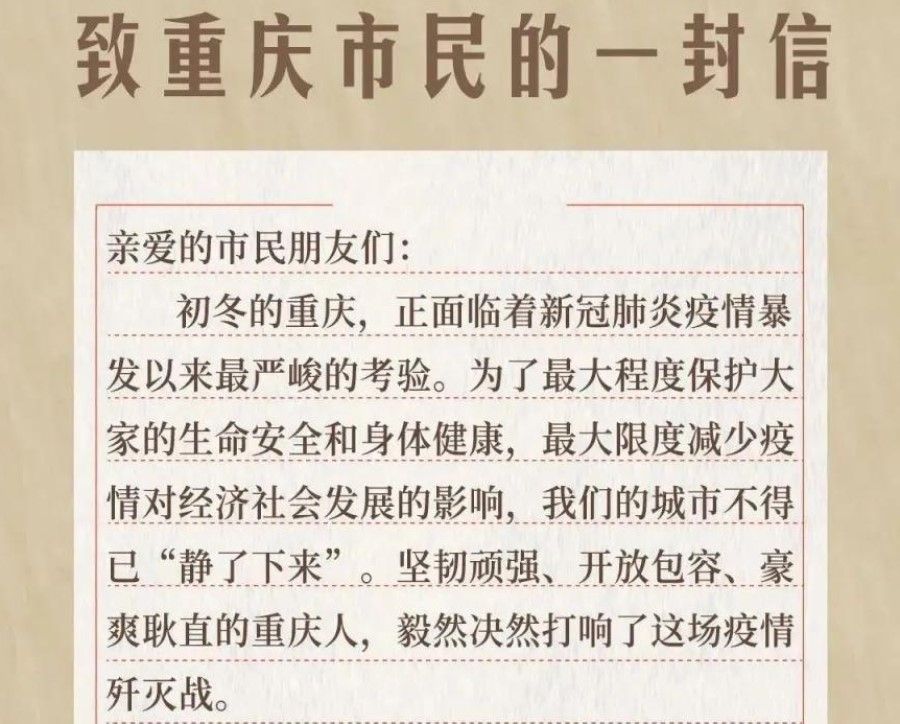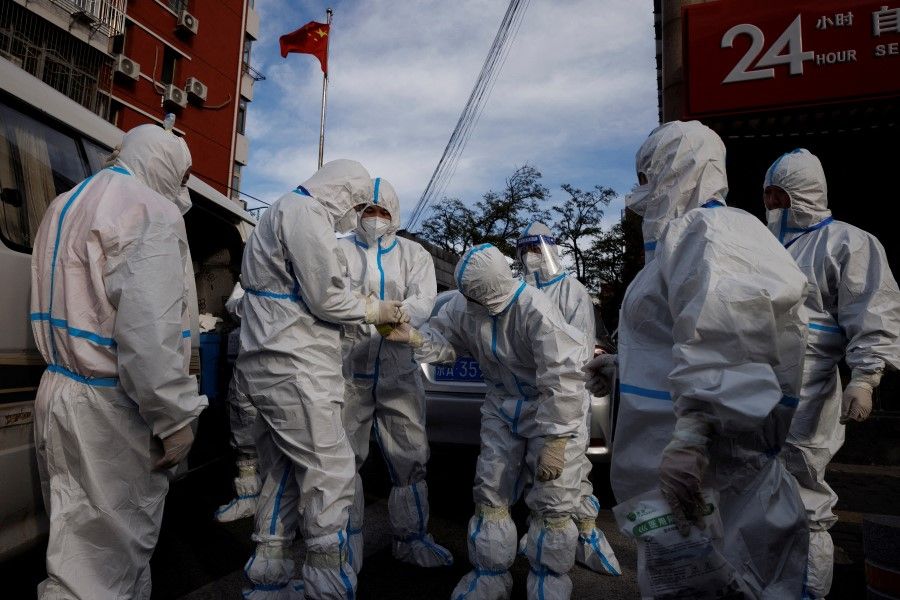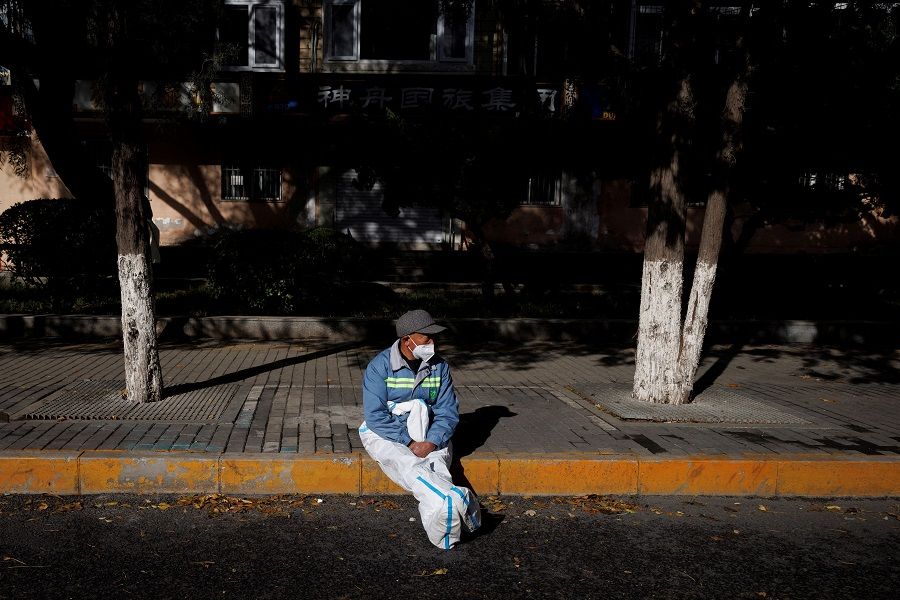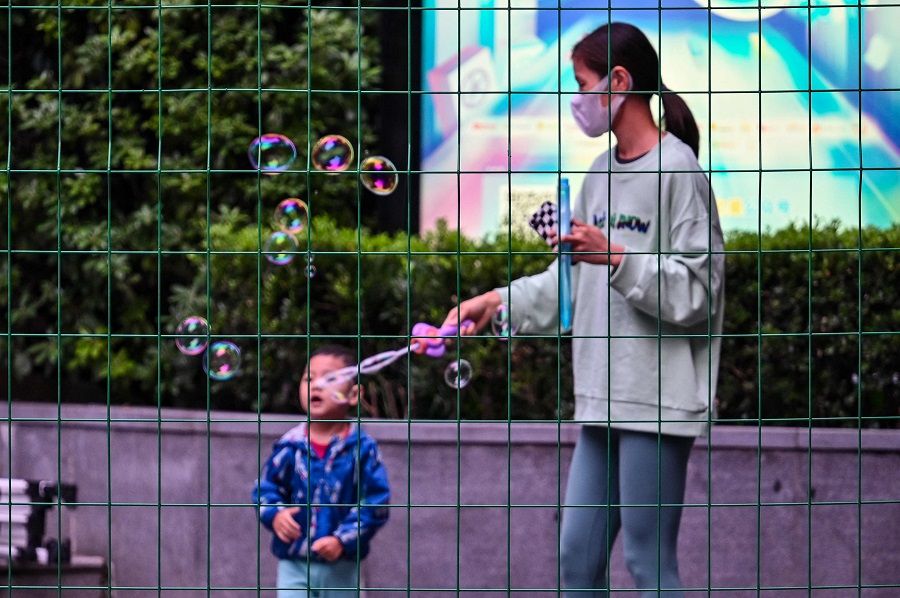Two steps forward, three steps back: Lockdowns in China still prevalent

A friend in Beijing's Haidian district said he was quarantined, with a notice stuck on his door, because there was a confirmed Covid case at a mall he visited that day.
This friend complained: "I wasn't a close contact, just there at the same time. The ninth version of the authorities' controls mandates two tests within three days with no need for quarantine. But my residential compound still put me and my family under a seven-day quarantine, saying they were following rules from the top. Isn't this quarantine for everything? The 20 measures just cannot be implemented."
The "20 measures" refer to guidelines released on 11 November to improve Covid controls, including shortened quarantines and doing away with the need to identify close contacts. The measures are viewed as a clear sign that Covid controls are being relaxed, and an important step to China moving towards precise controls and the gradual easing of controls.
Not much of a relaxation of measures in practice
But soon after the measures were announced, cases in China went up, with defences broken in Beijing, Guangzhou, Chongqing, Tianjin and other major cities. On 19 November, Beijing saw 69 confirmed symptomatic cases and 552 asymptomatic cases, 122 identified through community level test screening; Guangzhou had 200 local confirmed symptomatic cases and 8,234 asymptomatic cases; Chongqing had 183 local cases and 4,527 asymptomatic cases; Tianjin had 122 asymptomatic local cases.

With the resurgence of cases, the number of high-risk areas has jumped, and there is a trend of Covid controls taking a step backwards, with lockdowns and mass testing the norm. No wonder my friend in Beijing did not see his circumstances improve but suffered harsher restrictions instead. Guangzhou is calling for stronger Covid controls, while the Chongqing authorities released an open letter calling for residents to fight the outbreak together by staying home and testing; Tianjin continues to call for people to test.
With the authorities calling for fast curbs to the spread of Covid, various areas have ramped up controls, sending the community back to the dreariness of strict controls.
From 12 November, state media People's Daily ran seven commentaries emphasising firm resolve in preventing imported cases and a rebound in local cases, implementing the "dynamic zero-Covid" policy, doing one's duty in protecting the country, and taking firmer and more decisive measures to quickly curb the spread of Covid.
With the authorities calling for fast curbs to the spread of Covid, various areas have ramped up controls, sending the community back to the dreariness of strict controls. As for whether this is a one-size-fits all approach or adding layers of controls, that has mostly gone out the window. Many people have gone from optimism and hope following the announcement of the 20 measures, back down to freezing point.

After the 20 measures were announced, Hebei's capital Shijiazhuang removed testing for public places for a while, as a "test spot" for relaxing controls. On 19 November, Shijiazhuang saw 423 asymptomatic local cases, and announced that for the next three days, community organisations, clinics, and outpatient departments would temporarily suspend treatment, with all staff to support testing on the streets and in communities. Netizens felt that Shijiazhuang had gone back to mass testing.
Locking down an area is still the simplest and most familiar anti-Covid measure implemented across various Chinese regions.
Lockdowns may no longer be as effective
Hebei officials have advised residents to avoid going out unnecessarily, to reduce contact with outsiders, and to refrain from gathering in groups, leaving their communities, leaving the city, and most importantly, visiting medium- and high-risk areas.
Clearly, Shijiazhuang's move to do away with the need to check nucleic acid test results has run into problems and it is uncertain if the relaxed measures will stay. Locking down an area is still the simplest and most familiar anti-Covid measure implemented across various Chinese regions.
But the problem is, while lockdowns are straightforward and have been proven effective in the past, at a time when the coronavirus is mutating and spreading at a faster pace than before, are lockdowns still as effective?
However, having gone through nearly three years of stringent Covid-19 measures, public sentiment has changed.

Even after the 20 measures were announced, Beijing, Guangzhou, Chongqing and other regions did not relax their Covid restrictions. The onslaught of the coronavirus ravaged on, showing that the spread moved faster than the original epidemic prevention and control measures could contain. Someone even suggested that the cities should learn from Shanghai's earlier experience and observe a city-wide "moment of silence" - that is, enter "lockdown mode" like Wuhan did in 2020.
However, having gone through nearly three years of stringent Covid-19 measures, public sentiment has changed. It is uncertain if the Chinese people can take the lockdowns for much longer, and whether the Chinese economy and interactions with the outside world can withstand the impact of lockdowns on major cities such as Beijing, Guangzhou and Chongqing. If handled poorly, not only would the pandemic not be contained, the economy and society could spin out of control as well.
While officials have said repeatedly that the 20 measures are not a sign of relaxing prevention and control, let alone opening up or "lying flat", there has been a significant increase in online debate over "tightening" and "loosening" Covid-19 control requirements in China recently. Overall, there has been growing support for the gradual relaxation of Covid restrictions.
"People's understanding of the coronavirus has mostly remained in the period of the Wuhan outbreak. This is where the most explanation must be done." - Professor Jin Dong-Yan, Lee Ka Shing Faculty of Medicine, The University of Hong Kong
Public understanding stuck in a time warp
Putting ideological, "conspiracy theory-related" and other emotional accusations aside, supporters of each camp have a point. Those advocating "tightening" control requirements think that maintaining the country's stringent anti-Covid measures protects the health of the people, especially the elderly, and prevents a "medical run" due to large-scale outbreaks. On the other hand, supporters of "loosening" control requirements think that although the coronavirus spreads quickly, it has become less deadly. They believe that the damage caused by stringent controls is already greater than the damage caused by the spread of the coronavirus.

On 19 November, The Paper quoted Professor Jin Dong-Yan of The University of Hong Kong's Lee Ka Shing Faculty of Medicine as saying that the current Omicron variant is less pathogenic than prior variants and less likely to cause a run on medical resources. He explained, "People's understanding of the coronavirus has mostly remained in the period of the Wuhan outbreak. This is where the most explanation must be done."
Jin's words ring with hard truths. But amid a climate of strict control, no expert in the Chinese system is able to speak such truths yet.
Clearly, if China wants to overcome the challenges of the pandemic, aside from adopting precise epidemic prevention and control measures and vaccinating its people, the country also has to help the public gain a more comprehensive and scientific knowledge of the coronavirus's changes and dangers, and to get rid of the people's irrational fear of the infectious disease. Lockdowns may perhaps contain the coronavirus temporarily in a certain region, but it is no longer a long-term solution.
This article was first published in Lianhe Zaobao as "疫情防控只能靠"封"?".
Related: Lockdowns or not: China's officials face new dilemma implementing anti-Covid measures | What to think about when you think about China under Covid | Chinese ambassador Sun Haiyan: Why not think about China in this way? | China eases pandemic rules but people are worried | No end to China's zero-Covid in the short term
